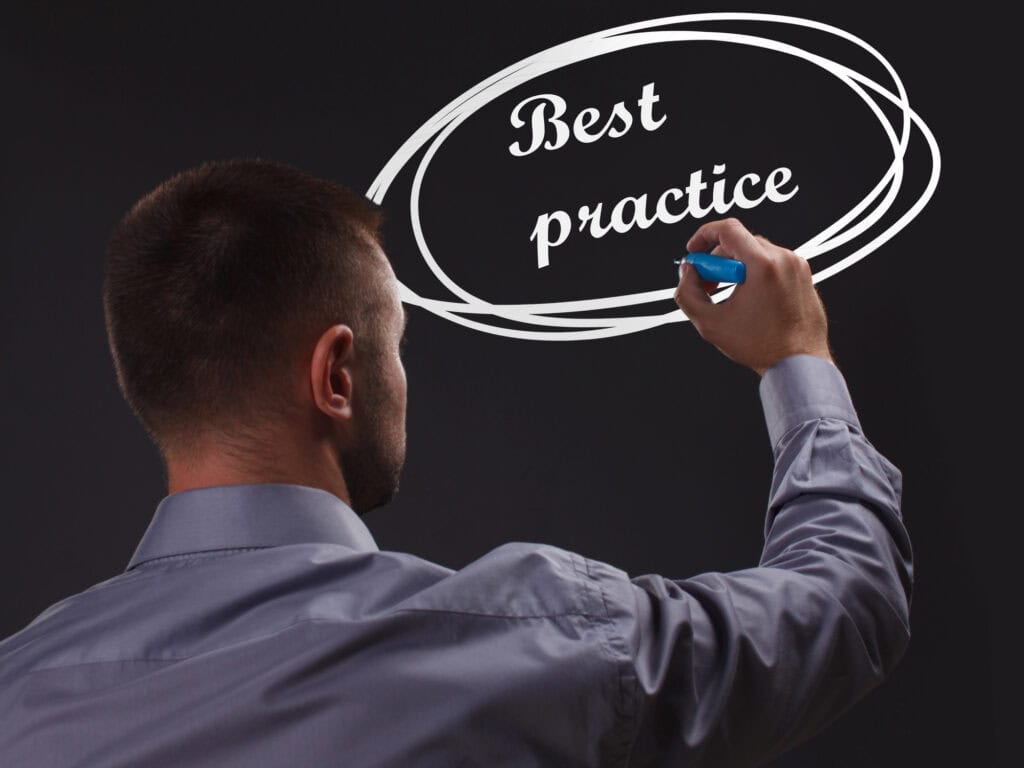Does the thought of speaking in front of an audience make your palms sweat and your heart race? You’re not alone. Fear of public speaking, also known as glossophobia, affects 77% of people, making it one of the most common anxieties worldwide. Yet, this skill is indispensable for personal growth and career success. Whether you’re pitching a business idea, leading a team meeting, or delivering a keynote address, the ability to speak confidently can set you apart and open doors to incredible opportunities.
This article will guide you on how to calm nerves when public speaking through practical, proven strategies. From pre-speech preparation techniques to calming exercises and mindset shifts, you’ll gain tools to turn nervous energy into a powerful asset. Whether you’re a beginner or an experienced speaker looking to refine your approach, these insights will help you step on stage with poise and clarity.
Imagine delivering a speech that leaves your audience inspired and engaged. Ready to make that vision a reality? Let’s dive in!
Understanding Presentation Anxiety

Presentation anxiety, often referred to as stage fright, is a natural response to the pressure of public speaking. If the idea of standing before an audience makes your heart race and your palms sweat, you’re not alone. Knowing how to calm nerves when public speaking is essential for anyone looking to communicate with confidence and make a lasting impression.
Why Does Presentation Anxiety Occur?
This anxiety stems from the fear of being judged, making mistakes, or failing to meet audience expectations. These fears activate your body’s fight-or-flight response, leading to physical symptoms like a racing heart, shaky hands, or shortness of breath. While these reactions are normal, they can interfere with your ability to deliver an effective presentation.
How to Overcome Presentation Anxiety
1. Prepare Thoroughly
Confidence begins with preparation. Know your material inside and out to reduce uncertainty. Practice in front of a mirror or record yourself to refine your delivery.
2. Control Your Breathing
Deep, diaphragmatic breathing can slow your heart rate and calm your mind. Before stepping on stage, inhale for four counts, hold for four counts, and exhale for four counts.
3. Visualize Success
Imagine yourself delivering a flawless presentation. Visualization helps replace fear with confidence.
4. Start Small
If you’re new to public speaking, practice in low-pressure settings like small groups or casual meetings. Gradually build your comfort level.
5. Focus on Your Audience
Shift your focus from your anxiety to your audience. Remember, they’re there to learn from you, not to judge you.
Recognizing Symptoms of Nervousness
When learning how to calm nerves when public speaking, the first step is recognizing the signs of nervousness. Many people experience this common challenge, but understanding its symptoms can help you manage them effectively and speak with confidence.
Common Physical Symptoms
Nervousness often triggers physical responses caused by the body’s fight-or-flight reaction. These include:
- Sweaty palms or shaky hands.
- A racing heartbeat or shortness of breath.
- Dry mouth or a tight throat.
- Trembling voice or fidgeting.
Recognizing these physical cues allows you to address them before they escalate, improving your stage presence and ability to focus on your message.
Emotional and Mental Signs
In addition to physical symptoms, nervousness can manifest mentally, such as:
- Overthinking potential mistakes.
- Feeling overwhelmed by the size of the audience.
- Fear of being judged or criticized.
Acknowledging these feelings can help you reframe them. For example, instead of seeing a large audience as intimidating, view it as an opportunity to share your expertise with more people.
How to Use Awareness to Calm Nerves
Once you recognize these symptoms, you can use practical strategies to calm your nerves:
- Deep Breathing: This slows your heart rate and reduces anxiety. Inhale for four counts, hold for four counts, and exhale for four counts.
- Positive Visualization: Picture yourself delivering a confident, engaging presentation.
- Grounding Techniques: Focus on the feel of the microphone or the sound of your voice to stay present.
Thorough Preparation: Your Best Defense

When it comes to learning how to calm nerves when public speaking, preparation is your most reliable defense. Fear of the unknown is one of the biggest triggers for anxiety, but thorough preparation transforms uncertainty into confidence, allowing you to approach any presentation with ease.
Why Preparation Reduces Anxiety
Proper preparation minimizes surprises and increases your familiarity with the material, making you feel in control. When you’re well-prepared, you can focus on connecting with your audience rather than worrying about forgetting key points or stumbling over words.
Actionable Preparation Tips
- Understand Your Audience
Research your audience’s needs, interests, and expectations. Tailor your content to resonate with them, ensuring a more engaging delivery.
- Outline and Rehearse
Create a clear outline of your speech and practice it multiple times. Use tools like a timer to manage pacing and ensure you stay within the allotted time.
- Simulate the Environment
Practice in an environment similar to where you’ll be presenting. If possible, rehearse on the actual stage or in the meeting room to familiarize yourself with the setting.
- Prepare for Q&A
Anticipate questions your audience might ask and practice your responses. Confidence in handling Q&A sessions reinforces your overall readiness.
Engaging in Mindful Meditation

When preparing for a presentation, mindfulness meditation can be a powerful tool to calm your nerves and enhance your focus. Knowing how to calm nerves when public speaking often begins with learning how to center yourself and quiet your mind.
Why Mindful Meditation Helps with Public Speaking
Mindful meditation helps reduce anxiety by encouraging you to stay present and detach from negative thoughts. When facing the pressure of public speaking, you may feel overwhelmed by fears of judgment or failure. Meditation trains your mind to recognize these thoughts without being consumed by them, fostering a sense of calm and control.
Steps for Practicing Mindful Meditation
- Find a Quiet Space
Choose a distraction-free environment where you can relax and focus.
- Set a Timer
Spend 5–10 minutes meditating. Short, focused sessions can be more effective than longer, unfocused attempts.
- Focus on Your Breathing
Breathe deeply and slowly, paying attention to each inhale and exhale. This will help slow your heart rate and reduce physical signs of anxiety.
- Use Visualization
Picture yourself delivering a confident and engaging presentation. Envision the audience responding positively to your words.
- Acknowledge and Let Go of Anxiety
When distracting thoughts arise, acknowledge them without judgment and gently return your focus to your breath.
Making Meditation a Habit
Incorporating mindful meditation into your routine can help you stay composed and grounded before any public speaking engagement. Over time, you’ll notice reduced anxiety, improved focus, and a stronger stage presence.
Start practicing mindful meditation today to build confidence and discover how to calm nerves when public speaking effectively!
Visualization Techniques for Success
One of the most powerful ways to learn how to calm nerves when public speaking is by using visualization techniques. By mentally rehearsing your speech and picturing a positive outcome, you can transform anxiety into confidence. Visualization not only reduces stage fright but also improves your focus and delivery.
Why Visualization Works
Visualization activates the same neural pathways in your brain as actual practice. By imagining yourself confidently speaking to an engaged audience, you’re training your mind to see public speaking as a success rather than a threat. This shift in mindset can significantly reduce the fear of failure or judgment.
Steps to Visualize Success
- Find a Quiet Space
Sit in a comfortable, distraction-free spot where you can focus entirely on your thoughts.
- Imagine the Environment
Picture the venue where you’ll speak. Visualize the stage, the audience, and the atmosphere. Familiarizing yourself mentally with the setting can reduce the element of surprise.
- Visualize a Confident Performance
Envision yourself standing tall, speaking clearly, and maintaining eye contact with your audience. Imagine the crowd responding positively, nodding, and applauding.
- Practice Positive Affirmations
Repeat affirmations like, “I am a confident speaker,” or “I can captivate my audience.” These statements help reinforce a positive mindset.
- Focus on the Outcome
Imagine how accomplished you’ll feel after delivering a successful presentation. This can motivate you to channel your nervous energy productively.
Breathing Exercises to Calm Nerves

Feeling anxious before stepping on stage? Knowing how to calm nerves when public speaking is essential for delivering your message effectively. One of the simplest yet most powerful techniques to reduce anxiety is controlled breathing. By calming your mind and body through proper breathing exercises, you can regain focus and confidence.
Why Breathing Matters for Public Speaking
When you’re nervous, your breathing tends to become shallow and rapid, signaling your brain that you’re under stress. This can escalate feelings of anxiety and make it difficult to speak clearly. Controlled breathing not only lowers your heart rate but also provides a steady flow of oxygen to your brain, helping you think more clearly and remain composed.
Effective Breathing Techniques
- Diaphragmatic Breathing
- Sit or stand comfortably, place one hand on your chest and the other on your abdomen.
- Breathe in deeply through your nose, allowing your abdomen to rise while keeping your chest still.
- Exhale slowly through your mouth. Repeat 5–10 times.
- Box Breathing
- Inhale for 4 counts, hold your breath for 4 counts, exhale for 4 counts, and pause for 4 counts.
- Repeat the cycle for 1–2 minutes to reduce nervous energy.
- Counting Your Exhales
- Breathe in deeply and focus on counting each exhale.
- This keeps your mind from racing and helps you stay present.
Establishing a Pre-Speech Routine
If you’ve ever wondered how to calm nerves when public speaking, establishing a pre-speech routine can be your secret weapon. By creating a consistent set of actions to perform before every presentation, you can reduce anxiety, boost confidence, and ensure you step on stage feeling prepared and focused.
Why a Pre-Speech Routine Works
A pre-speech routine helps ground you, creating a sense of familiarity and control before stepping into the spotlight. When your mind knows what to expect, it’s easier to stay calm and focused, preventing stage fright from taking over.
Steps to Build Your Pre-Speech Routine
- Warm Up Your Voice and Body
Practice simple vocal exercises like humming or repeating tongue twisters to loosen up your vocal cords. Stretching your shoulders, neck, and arms can help release physical tension.
- Review Key Points
Quickly glance over your speech outline or note cards. Focus on your main points rather than memorizing every word.
- Practice Breathing Exercises
Use deep breathing or box breathing techniques to calm your mind and reduce a racing heart. This can help bring your nerves under control and steady your voice.
- Visualize Success
Picture yourself confidently delivering your presentation and the audience responding positively.
- Use Affirmations
Repeat encouraging phrases like, “I am ready,” or “I am a confident speaker.” Positive self-talk can help replace doubts with assurance.
Transforming Anxiety into Excitement
If you’ve ever struggled with how to calm nerves when public speaking, you might be surprised to learn that anxiety and excitement are closely related emotions. By reframing your nervousness as excitement, you can channel that energy into a powerful, engaging performance.
Why Transforming Anxiety Works
Anxiety and excitement share similar physical responses: a racing heart, heightened alertness, and a surge of adrenaline. The difference lies in perception. While anxiety focuses on fear, excitement centers on anticipation and opportunity. Shifting your mindset from dread to enthusiasm helps you embrace the moment rather than fearing it.
Steps to Turn Anxiety into Excitement
- Reframe Your Thoughts
Instead of telling yourself, “I’m so nervous,” say, “I’m excited to share my message.” Positive self-talk helps rewire your brain to focus on possibilities rather than pitfalls.
- Use the Energy Productively
Channel the adrenaline into purposeful gestures, a dynamic tone, and strong stage presence. Let your enthusiasm captivate your audience.
- Visualize a Positive Outcome
Picture the audience responding with interest and applause. This mental exercise turns apprehension into motivation.
- Focus on the Message, Not the Fear
Remind yourself that your goal is to share valuable insights, not to achieve perfection. Shifting attention to your audience’s needs diminishes self-focus and fear.
FAQs
What is presentation anxiety?
Presentation anxiety, also known as stage fright, is the nervousness or fear individuals feel before or during a public speaking event. It often stems from a fear of being judged or making mistakes and can lead to physical symptoms like a racing heart, sweaty palms, or shaky hands. Overcoming presentation anxiety involves preparation, deep breathing, and shifting focus from fear to the message you want to deliver. Learn more tips in our guide!
Why do I get so nervous when presenting?
Feeling nervous when presenting is a natural response to the fear of judgment, making mistakes, or being in the spotlight. This triggers your body’s fight-or-flight response, causing symptoms like a racing heart or shaky hands. To calm nerves, focus on preparation, practice deep breathing, and reframe nervous energy as excitement. Learn more techniques to overcome presentation anxiety in our full guide!
Why am I afraid of public speaking?
Fear of public speaking, also known as glossophobia, is often caused by a fear of judgment, failure, or making mistakes in front of an audience. This fear activates your body’s stress response, leading to physical symptoms like sweating or a racing heart. Overcoming this fear involves preparation, practice, and techniques like deep breathing or visualization. Learn more tips to build confidence in our guide!
What is a crippling fear of public speaking?
A crippling fear of public speaking, or glossophobia, is an intense anxiety that prevents individuals from speaking in front of an audience. It can cause physical symptoms like shaking, sweating, or a racing heart, and emotional distress that disrupts communication. Overcoming this fear involves gradual exposure, mindfulness techniques, and seeking professional help if needed. Learn more strategies to manage and conquer stage fright in our guide!
How can I overcome my fear of public speaking?
To overcome your fear of public speaking, start by preparing thoroughly and practicing in low-pressure environments. Use deep breathing techniques to calm nerves and focus on your message rather than your fear. Visualize a successful presentation and shift your mindset to view nervousness as excitement. With consistent effort, your confidence will grow. Learn more public speaking tips in our detailed guide!
Conclusion
In conclusion, learning how to calm nerves when public speaking is within reach when you apply the right strategies. Whether it’s mastering deep breathing, visualizing success, or starting small with low-pressure opportunities, these techniques will help you manage anxiety and deliver more confident presentations.
Take the first step by putting these tips into practice and see the difference in your public speaking skills. Ready for more? Join our free public speaking course to continue building your confidence and transform your communication skills today!

